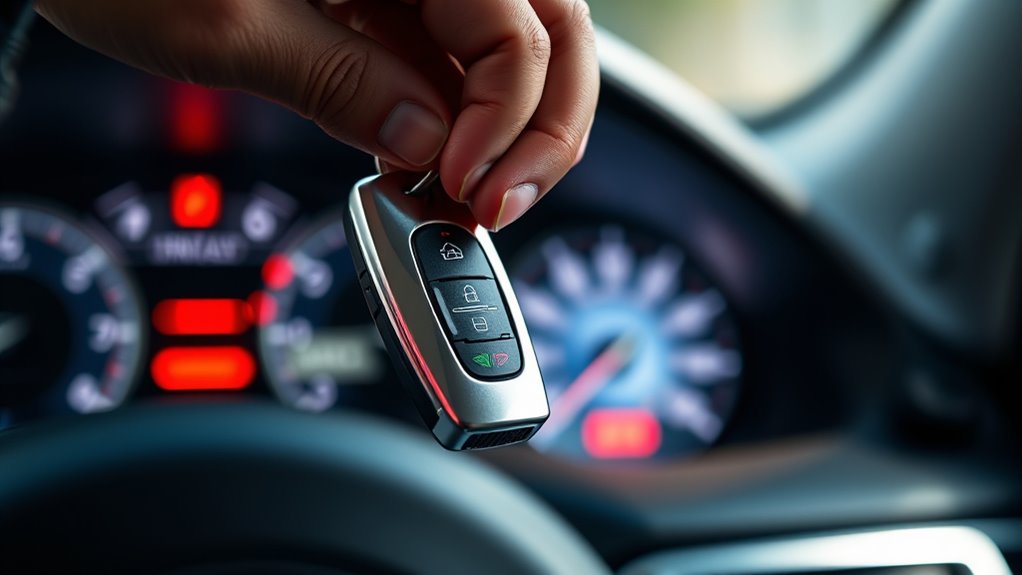When you receive a recall notice, act quickly by contacting your dealership or authorized service center to schedule repairs. Bring your notice and vehicle documents, and follow safety precautions during the repair process. Most repairs are free under warranty, so verify coverage first. If your vehicle is unsafe to drive, consider alternative transportation or request a loaner. Staying informed and organized makes handling recalls smoother — keep going to learn more about ensuring your safety and vehicle maintenance.
Key Takeaways
- Verify if your vehicle is affected by checking the recall notice or manufacturer’s website.
- Contact your dealership or authorized service center to schedule a free repair appointment.
- Bring the recall notice and vehicle documentation, and follow safety procedures during repairs.
- Consider alternative transportation options if the recall involves urgent safety issues.
- Keep all repair records and stay informed about updates or additional recalls for your vehicle.

Receiving a car recall notice can be unsettling, but acting promptly guarantees your safety and minimizes inconvenience. When you get a recall letter from your manufacturer or dealership, it’s essential to understand what steps to take next. Your primary concern should be safety procedures—ensuring that your vehicle is safe to drive and that you avoid any potential hazards. The notice typically explains the specific issue, such as a faulty airbag or brake defect, and provides instructions on how to address it. While it’s natural to worry about the disruption, responding quickly can prevent accidents and further damage. Additionally, staying informed about electric bike models and their features can help you make better decisions if you consider alternative transportation options. Your warranty coverage plays a significant role in how you handle the recall. Most recalls are covered under the vehicle’s warranty, meaning repairs or replacements are free of charge. Before scheduling your appointment, verify that your vehicle is still within the warranty period and that the recall is listed under your coverage. This can usually be checked through the manufacturer’s website or by calling your dealership. If the recall isn’t covered or your warranty has expired, you might need to pay for repairs, so understanding your coverage helps you plan accordingly. Once you confirm your warranty coverage, contact your dealership or authorized service center to schedule a repair appointment. Many manufacturers prioritize recall repairs, so they often expedite these services. When you go in, bring your recall notice and vehicle documentation, such as registration and proof of ownership. The dealership will typically inspect your car to confirm the issue and carry out the necessary repairs. It’s important to follow their safety procedures during the service—wear any required protective gear, and ensure the vehicle is securely handled during repairs. While waiting for your repair appointment, avoid using your vehicle if the recall warns of immediate danger, such as a risk of fire or brake failure. If advised, consider alternative transportation options until the repairs are completed. In some cases, the manufacturer may offer a loaner vehicle or cover transportation costs, especially if the repair takes longer than expected. Keep all documentation from the repair process, including receipts and service reports, as these may be useful for future warranty claims or dispute resolution. Handling a recall notice doesn’t have to be stressful if you act swiftly and follow the proper procedures. By understanding your safety procedures and warranty coverage, you ensure your vehicle remains safe to drive and that you’re not caught off guard by expenses. Staying proactive minimizes inconvenience and keeps you confidently on the road, knowing your car’s safety is prioritized.
Frequently Asked Questions
Can I Ignore a Recall Notice Without Consequences?
Ignoring a recall notice isn’t a good idea; it can lead to serious safety concerns and legal implications. Car manufacturers issue recalls to fix issues that could endanger you or others. If you dismiss the notice, you risk driving a vehicle that might fail unexpectedly, and you could face fines or liability if accidents happen. Always follow the recall instructions to guarantee your safety and avoid legal trouble.
How Long Do I Have to Get My Car Repaired?
Think of the recall process as a friendly reminder to keep your car in top shape. Typically, automakers give you a reasonable repair timeline, often within a few weeks to a couple of months. However, it’s best not to postpone. Check your notice for specific deadlines, and contact your dealer promptly to schedule repairs. Being proactive ensures your vehicle stays safe, reliable, and ready to serve you without any worries.
Will My Warranty Cover the Recall Repair Costs?
Your warranty coverage usually includes recall repairs, meaning the repair costs should be covered by the manufacturer. You won’t have to pay out of pocket for these repairs, as long as your vehicle is still under warranty and the issue is part of the recall. It’s a good idea to verify with your dealership or manufacturer to make certain the repair qualifies for warranty coverage and to avoid unexpected repair costs.
Can I Get a Loaner Vehicle During Repairs?
You can often get a loaner vehicle during recall repairs, especially if your dealership offers this service. Check with your service center about their loaner vehicle policies. If they don’t provide one, explore rental options through your insurance or local rental agencies. Some manufacturers also partner with rental services, making it easier to stay mobile while your car is being repaired. Always ask in advance to secure your transportation needs.
What Should I Do if the Recall Repair Isn’T Available Locally?
If your recall appointment isn’t available locally, you should contact your dealership to ask about an alternative repair option. They might arrange for your vehicle to be repaired at a different location or provide a loaner. Stay proactive by discussing your situation and exploring all options. Keep records of your communication, and follow up regularly to make certain your recall is addressed promptly, even if the repair isn’t immediately available nearby.
Conclusion
Handling a recall notice might seem intimidating, but acting promptly keeps you safe and your vehicle reliable. Remember, over 30 million cars are recalled each year in the U.S., highlighting how common these issues are. By staying informed and responding quickly, you protect yourself and others on the road. Don’t ignore the notice—your quick action can prevent accidents and costly repairs. Stay proactive, and drive with confidence knowing you’re taking the right steps.









